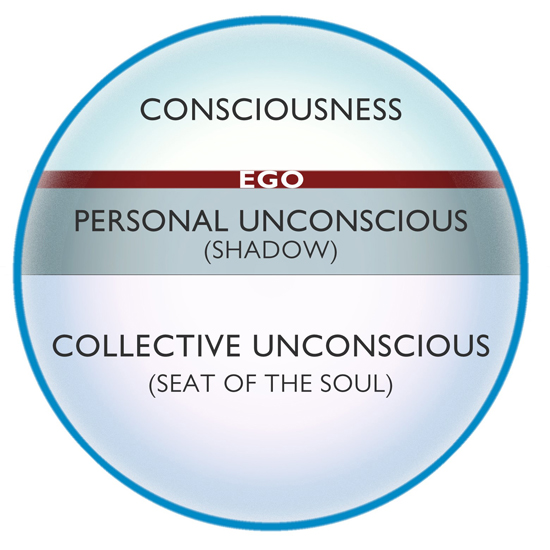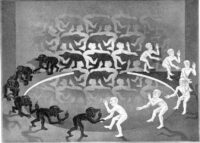The methods and strategies devised by ego to sustain itself are largely primitive and barbaric. They display themselves due to the ways we feel and imagine ourselves and others, and the behavior that flows from that. Ego does not conform well to others; a daemon in the cave of self-identity it purposefully constructs a reality to suit itself, expecting and often demanding acceptance from others.
People sometimes share tools used by ego — what psychotherapist C.J. Jung called “the collective unconscious” — archetypes such as “mother” and “father” figures. But ego also employs entirely unique and personalized constructions of reality. When bringing these constructions of reality into the world, we are then confronted with finding accommodation for them, not an easy task. Like solving an enormous jig-saw puzzle with billions of uniquely-shaped individual pieces, the task of accommodating our egos — comfortably or not — into the totality of existence is our primary psychological and emotional challenge.
The accommodation we seek is not possible by altering the shapes of others, but ego strongly resists that hard fact. To the contrary, ego’s strategy is based upon barbaric assumptions that others will bend to its will — by force of argument, clever seduction, relentless cajoling or painful brute force, if necessary. Acting as protector of our imagined self, our ruthless daemon can become tormentor, inflicting pain and suffering upon everyone, to greater or lesser degrees.
The restraints we place upon our daemon ego — conformance to external authority first and foremost, in the form of rules, laws, manners and social conventions — are not sufficient to contain the beast. Hiding the shadows of the unconscious, ego extends stealthily outwards, revealing itself in abusive speech patterns, persistent feelings of insecurity, self-destructive personal habits, distorted conceptions of others and their motivations, and in cases of extremity, violence and murder.
Those who have more successfully accepted restraints, either through intellectual views or suppression and calming borne of religious and spiritual practice, contain the beast well enough to establish a relatively stable place in the world. Yet even for these people, life remains a puzzle as pieces of ego change shape and what used to fit well no longer does. Aging, for example, causes physical and emotional change impacting ego’s ability to assert itself in the same ways it always has; in the adolescent, hormone surges generate emotional extremes, while in the elderly the spirit may be willing but the flesh becomes weak. In this dynamic situation, the daemon adjusts by shifting shape and strategy.
There are extraordinary people who claim to have transcended ego; it’s a magnificent achievement and undoubtedly they must feel very proud. The rest of us ordinary folk must muddle through, gazing at life through ego’s scrim-like veil of illusory interpretations, emotional projections and narrative delusions. Dramatic narratives and shenanigans of all sorts is our daily fare as our daemon plays out a real-life version of Game of Thrones and its soap opera plot lines of power and survival.
Thus we all suffer from particular forms of torment, devising strategies clever and otherwise, to escape them. Distraction, in the form of entertainment, mind-altering drugs and alcohol provide some short-term relief. We can’t outrun the daemon, however; accordingly, the least painful path is to become thoroughly familiar with our untamable ego-beast, to turn towards it with curiosity and through intimate understanding somewhat loosen its grip.






“We do not have to improve ourselves; we just have to let go of what blocks our heart.”
Jack Kornfield